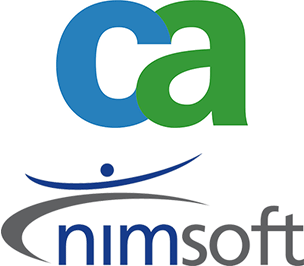
ServiceNow Integration APIs are used to connect and consolidate various network monitoring and performance management solutions. Hooking these together enables a holistic view of, and control over all network end-points. Ultimately, API utilization enables IT teams to keep track of network performance, maximize resource utilization and proactively prevent issues that lead to IT outages.
Even though building on an API can be fairly straightforward, there are also several important considerations that you should think through, before you start scripting.
Integration Methods Have Changed
Your underlying technology must be flexible enough to meet various evolving requirements. This means that the APIs connecting network infrastructure with business enablement capabilities including access and authentication; data import and processes; and network monitoring and analytics, should not be rigid or necessitate strong structural adherence (as seen in the early days of API-driven frameworks).
The first ServiceNow integrations were as simple as importing data in a CSV format or setting up authentication mechanism with the LDAP protocol, for instance. Because the technology has evolved, users can now integrate third-party or custom apps with ServiceNow, and even establish integration between individual ServiceNow instances. To enable these integrations, ServiceNow offers a range of integration options within the platform as MID Server or Web Services, and also supports popular ServiceNow Integration APIs based on REST and JDBC, among other protocols.
Before You Get Started
Users looking to leverage these interfaces and perform the integration themselves are highly recommended to evaluate the true scope and requirements of their projects – especially when dealing with custom integrations. The ServiceNow community has grown exponentially in recent years and documentation support for most integration setups is available. However, the process complexity, time-frame and resource requirements naturally vary for every unique integration project. For instance, a one-side data import using JDBC may be completed in a matter of hours or a few days. On the other hand, an integration designed to enable two-way data and process communication between custom apps could take many months, configuration changes on components from both sides, and ongoing manual efforts in the form of coding, maintenance and troubleshooting. You will also need to know a good amount about the app that you need to integrate with ServiceNow, including how the data and processes flow, how the parameters and configurations are mapped, and how operations are performed for dynamic, contextual workload use-cases.
You Can (Custom) Built It. But Should You?

It is important to note that although writing a ServiceNow Integration API is considered well within the realm of many developers, a strong knowledge base and skill set pertaining to technical writing may be equally important. And what if the parameters or variables are subject to errors during the read, formatting or transmission process of an API call? Who was responsible for documenting the newly integrated framework? (Most IT Operations people would admit that documentation isn’t necessarily our strongest point). Or, what is there’s a version change, either with ServiceNow or the connected application, and events suddenly stop changing because of a hidden incompatibility? Who will support the custom script?
These are only a few of the many challenges associated with the process of writing, deploying, and maintaining a custom integration API. But they point to a deeper concern: the usability and effectiveness of writing and updating a ServiceNow Integration API is as important as writing the of API itself. All in all, the API must enable tried, tested and truly applicable automation in connecting various software components with ServiceNow.
Pre-Packaged Options

To address these concerns, Evanios offers ServiceNow integrations that are supported out-of-the-box, and able to deploy faster and better because of their pre-packaged and carefully validated structures. The Evanios framework also offers an open API that includes options for custom scripting via CMD line, while supporting protocols and connections including TCP/UDP, REST, SNMP, log file, and Web services, among others.
Evanios pre-built ServiceNow Integrations let users connect any monitoring tool into ServiceNow. The plug-and-play solution makes automation easy, through codeless logic that parses and normalizes event data. You can truly eliminate the need to codify every single setting, configuration and mapping otherwise critical for writing a ServiceNow Integration API. Plus, many Evanios integrations are bidirectional, helping IT Operations teams turn off “noisey” alerts in the source consoles, automatically. Further, “normalization” doesn’t mean that Evanios throws away important field data. Instead, that source information is reflected in every event summary. The console reduces overall noise, while enriching event data with ITSM process information (e.g. CMDB, Change Management, Incident) in order to create actionable intelligence.
See below for a list of current integrations, and contact us if you would like to see a live demo, or try Evanios in your own environment.
























.png)
.png)






.png)





.png)











